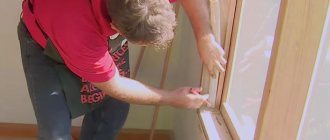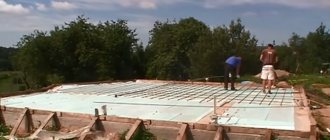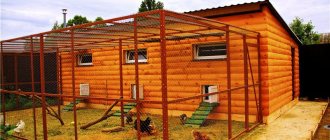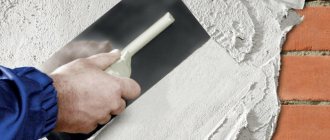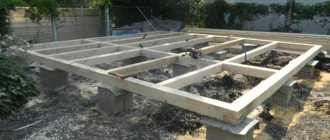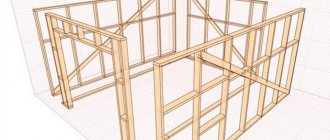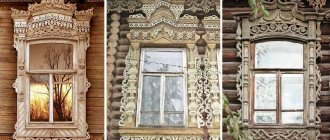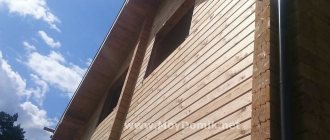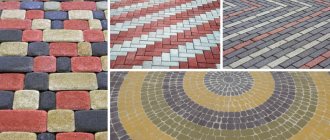Window finishing methods
Today, there are various methods of finishing slopes for plaster windows. Everyone can choose the most suitable type of finish for themselves:
- plaster;
- MDF panels;
- drywall;
- insulated sandwich panels;
- cork panels.
How and with what help the work is performed is discussed below.
The comfort and warmth in the house depends on the design of the window.
Why do you need plastering of window slopes?
Often, a property owner thinks about the need to plaster the slopes of plastic windows with his own hands after replacing double-glazed windows. During the installation of windows, part of the wall is destroyed. To restore its integrity, it is necessary to apply a layer of plaster.
The application of a finishing layer to slopes is carried out not only to improve the aesthetic appearance of the room, but also to:
- cover up cracks, chips and small cracks;
- hide fasteners;
- protect windows from high humidity;
- improve the degree of sound insulation;
- increase thermal insulation.
On a note!
The method of applying plaster has much in common with the process of finishing the doorway area.
If desired, plastered window openings can be decorated in a variety of ways (pasting them or draping/painting them).
Preparatory work
If there is a window sill, it is better to install it before plastering the slope, otherwise you will need to knock off part of the slope from below and re-seal the flaws. Installing a window sill is simple, but before you plaster the slope on the window, you need to seal it with tape and film or paper so that it does not become dirty or damaged. The preparation of the window slope is as follows:
- A layer of old mortar is removed from the window, after which the walls are swept with brooms so that the plaster adheres well to the surface. Otherwise, cracks will appear, even worse if the new layer simply falls off the wall.
- It is better to cover the window frame itself with tape or tape.
- Inside, it is better to cover the fittings on the window, as well as the radiator under the window.
Prepared window surface for plastering
- The entire surface to be treated is primed with a deep penetration agent. This allows you to achieve maximum adhesion of materials.
- Next, the window is left for the soil to dry out; insulation can be done if necessary. Insulate the window sill itself before installation and you can use the material for the slope. Not just any insulation for a slope is suitable; the use of polystyrene foam and expanded polystyrene is allowed.
It is recommended to install slopes during the warm season. For a more detailed look at the process of decorating a window opening with your own hands, you can watch the video above.
How to plaster slopes on windows
To plaster window slopes in a living room, it is recommended to use gypsum mortar. The composition, which sets quickly, is easy to work with. If there is a high level of humidity in the apartment, it is better to purchase a cement-based plaster mixture. This solution is moisture resistant and resistant to ultraviolet rays.
When working with window openings, you cannot skip the priming step.
Features of the cement mixture
When choosing a cement mixture, it is worth considering that there are 2 types of compositions on sale:
- for rough coating (contains coarse sand);
- for finishing (fine-grained sand components are added to the solution).
The cement mixture can be prepared at home. The composition is easy to apply. When choosing a cement mixture, it is important to remember that it will take much longer to dry than gypsum
compound.
The most durable material for mortar is cement
Properties of gypsum plaster
Gypsum compositions for slopes can not only be purchased at a specialized store, but also prepared at home. The solution sets quickly, so some preparation is required to work with the composition.
Gypsum plaster is endowed with the ability to absorb moisture. That is why experts recommend using the solution only in a dry room, the surface of which is not in contact with precipitation. You should not plaster window openings with gypsum mixture on the outside of the building.
For your information!
Acrylic plaster is used to repair window slopes on the inside of the cottage or on the façade of the building.
Material selection
Before plastering the slopes, it is recommended to familiarize yourself with the materials that can be used to perform this work. The most common composition is cement-sand mortar. In this case, the mixture is stirred in a ratio of 1 to 3. Then water is added and everything is thoroughly mixed until the consistency of thick sour cream. This finishing method has been used since the middle of the last century, but today special plaster compositions are increasingly used, which only need to be mixed with water and stirred.
Plastering slopes with gypsum plaster or a universal ready-made mixture is much easier than working with cement mixture. However, this option is significantly cheaper, so you need to choose the material based on these characteristics.
Advantages of the plastering method
Plastering window slopes is a popular way of finishing window openings. It is important to use only high-quality building mixtures in your work. Such materials allow you to achieve a smooth surface, which will have a positive effect on the appearance of the slopes and the duration of operation.
Due to the presence of reinforcing fibers in certain types of plaster, the building mixture does not crack after drying. The plasticizer allows you to provide the necessary level of plasticity, which makes it possible to repair even small potholes and cracks.
Experts recommend using a mixture of coarse sand for rough work. For finishing, it is better to use a composition with finely dispersed, purified sand.
The vapor permeability of the mortar eliminates the accumulation of condensation in the area of window openings and the appearance of plaque, mold or mildew.
The main advantage of plaster on slopes is its long service life
Tools and materials
Even a beginner in the repair business can cope with finishing slopes. The most important thing is to adhere to the builders' recommendations and follow the step-by-step implementation process. During the work you will have to use:
- building level;
- tape measure;
- aluminum rule;
- spatula;
- trowel;
- sealant;
- profiles and strips;
- a knife, a pencil and a brush that allows you to apply a layer of primer;
- float for cement mortar.
You also cannot do without a mixer and a suitable container for mixing the solution; a hammer will come in handy. You also need a pencil for marking.
Making your own plaster mortar
Builders involved in the repair of slopes prefer to prepare a mixture consisting of 1 part cement and 2-4 parts sand for plastering window openings. To properly prepare plaster, you will need:
- Pour the sand into a deep container.
- Add a layer of cement.
- Mix the dry ingredients thoroughly and pour water into the container. The composition is constantly mixed at this time.
- Liquid is added until the consistency of sour cream is obtained.
Advice!
To speed up the setting process of the plaster, you should add a small amount of PVA glue or building plaster to the composition. To slow down the setting, you need to add detergent.
How to plaster slopes on windows
Beautifully designed window openings in combination with PVC window sills and a starting profile help to give a certain style direction that fits perfectly into the overall design of the room. It is important to follow the recommendations of specialists so that slope repairs are not required in the future. Correct application of the building mixture will hide the installation elements and traces of foam.
In order to plaster the slopes on the windows, you must take into account the recommendations of specialists and strictly follow the step-by-step instructions. This will allow you to avoid mistakes and perform high-quality finishing of window openings.
For those who are already familiar with the features of covering walls with mortar, it is easy to understand how to plaster window slopes. The principles are the same here, and the difference lies only in geometry. In addition, it is necessary to make a quality transition from the window frames to the main surfaces.
To obtain a homogeneous solution, use a construction mixer
Window finishing
Plastering slopes after installing plastic windows requires a competent approach. And in order for the window opening to remain beautiful for a long time and complement the interior, you need to adhere to a number of rules:
- The temperature of the room where the slopes are finished must be at least +5 °C when using cement mortar. Rodband plaster requires a little more indicators - from +10 °C.
- Each mixture should be prepared according to the instructions supplied with the finished product.
- Any type of solution has an individual gap, after which it sets. For example, a cement-based mixture should be used for 30 minutes, no more. It cannot be diluted again, as it loses its performance qualities. Therefore, the solution is prepared in portions.
- Before starting work, it is better to calculate how much mortar will be needed, depending on the thickness of the window openings and the desired dimensions of the slopes.
Following these simple rules allows you to keep parts of the window openings intact, and they will not become covered with cracks.
Surface preparation
It is not enough to know how to make slopes using a building mixture; in order to obtain a durable and even surface, you should not give up the need for preparatory work. Before you start plastering the slopes, you should:
- Clean the base from the layer of old coating and crumbling plaster.
- Remove excess polyurethane foam, which the builders used to blow out the gaps between the wall and the window.
- Remove dust and other contaminants from the slopes.
- Carry out wet cleaning by thoroughly rinsing the surface on which the solution will be applied with a damp cloth. After wet cleaning, you need to leave the slopes for a couple of hours to dry.
- After the specified period of time, it is necessary to apply a couple of layers of deep penetration primer to the surface of the window openings.
Before applying the primer, be sure to make notches if the walls are concrete. On brick surfaces, part of the mortar is removed. This is done to ensure good adhesion of the plaster. And only then the slopes are covered with a primer.
The preparatory stage should be given a lot of time and attention
Insulation of slopes under plaster
In order to prevent moisture condensation on the glass and window surfaces, it is necessary to take care in advance of insulating the slopes. If there is no thermal insulation pad such as foam or tow in the area of the joints, during the cooling of the double-glazed windows, the flow of cold will begin to be transferred to the adjacent walls.
The foam, which begins to crumble, will cause cracks to form, and cold will seep through them. Against this background, condensation will appear. To insulate the structure, you can use sheet insulation sheets such as polystyrene foam or polystyrene foam and use a warm plaster composition (perlite or other warm mixture for plaster).
Sheet foam is not resistant to moisture, so when using this material, high-quality waterproofing will be required. The best insulation for slopes is considered to be penoplex, which can be easily plastered. To insulate a window opening you will need:
- cut sheet insulation into pieces of the required size;
- glue the material to the frame;
- fix the reinforcing mesh over the insulation;
- apply a layer of plaster.
With regard to plastic windows, compliance with the technology of plastering slopes can improve thermal insulation indoors. Namely, it is worth considering:
- For the inside, it is better to use sealed and dense materials.
- Closer to the outside, it is better to give preference to heat-insulating and porous analogues.
This measure ensures good ventilation, thereby eliminating the formation of condensation. In ensuring high-quality sound insulation, an important role is played not only by the double-glazed window - types of window seals and sealants also have an impact on this. Any hardware store has a wide range of insulation materials such as polyurethane foam or polyethylene foam.
Strengthening corners
To protect internal corners (husks) from the formation of cracks, builders use corners for plastering slopes. When working to strengthen the corners, you will need to apply a solution to this area and level it using a special spatula. Having applied a strip of serpyanka, you need to press it with a spatula into the construction mixture. Next, it is recommended to apply the composition and level it with a spatula. Once the solution has hardened, you can rub it in.
Plastering corners will not be of high quality if you do not reinforce the outer corners (crests), since after a while they quickly become damaged. For reinforcement, corners for plastering slopes (counter-shoulders) are used. They are made of plastic or metal.
To begin with, the profile of the required length is measured and cut. Plaster is applied to the outer corner on both sides. The counter-shultz is applied and carefully pressed into the building mixture. At the same time, monitor the verticality of the profile using a level. Protruding mortar residues are leveled with a spatula.
Insulation of slopes is a mandatory technological process
Securing beacons
When starting to apply a leveling layer of plaster on the slopes along the beacons, it is necessary to mark, correctly install and fix the beacon profiles. The functions of beacons can be performed by:
- plastic profile;
- wooden edged board;
- mortar path;
- pieces of plywood that are attached to the corner with self-tapping screws.
To assemble the beacon profile, you will need to screw in 3 self-tapping screws on the surface of the slope. In this case, the caps are placed in one vertical line along the line that was drawn during marking. This procedure is best performed plumb.
A small amount of solution should be applied along the entire length of the line. In this case, it is important to control the position of the profile using a level. At the next stage, final fixation with the solution occurs.
In addition to attaching beacons to the building mixture, you can use parts that are easy to install:
- clips;
- cleverness;
- Ushastiki.
Note!
Beacons on cement mortar can only be used after 24 hours.
Plastering slopes along beacons
The question of how to properly plaster slopes using beacons worries many, especially beginners. It is recommended to start plastering from the inside. The building mixture is applied to the bottom and sides, and only then is it possible to move to the top of the opening. By applying a layer of plaster to the openings, the slopes on the windows should be leveled.
When starting plastering slopes, you must:
- Make a small part of the solution more liquid in consistency. Apply the compound over the surface of the opening and use a spatula to level the layer of plaster. The composition should be of such a consistency that the plaster does not spread, but also does not stick to the slope.
- Leave the work for a while so that the first layer has time to dry.
- Use a level and install the corner profile.
- Continue laying the building mixture, checking how even the surface is.
- Correct the corners after the solution has completely dried.
- Grout.
- If desired, decorate the slopes with decorative plaster.
When using beacons, all work is performed in the same way as in the case of plastering walls using beacons. However, here the distance between them is small and therefore a wide spatula or a short rule is sufficient for leveling.
It is most convenient to carry out plastering work on slopes along beacons
Grout
At this stage, a flat surface is created. You can start grouting only when the solution has dried. This usually takes from 16 hours to a whole day. It is better to give the mixture more time to set, but not to wait too long - more than 24 hours. The determining factors are humidity and temperature. To understand when to start grouting, you should use a clever trick. Take a little solution from the slope and rub it between your fingers. If crumbs fall out, then the time has come, it’s smeared - wait until the next check.
For grouting, the mixture is made more liquid, and it is no longer applied, but rather splashed over the surface. After this, you no longer use a spatula; here you need to use a grater with a foam working surface and a handle. You need to make circular movements with the tool. Upon completion of the work, the slopes are leveled.
This stage is not mandatory and you can do without it, especially when you plan to cover the slopes with putty in the future.
Finishing the work
At the end of the process, it is necessary to apply a small layer of putty to the plastered slopes, and after the surface has dried, paint it or decorate it with facing material. Before applying putty, builders recommend cleaning the openings with sandpaper from drying lumps and irregularities. After applying a layer of primer, you can putty. It is worth considering that the starting mixture is applied first, and only after that the finishing mixture.
After the plaster has dried, the surface is grouted.
Do-it-yourself plastering of window slopes
How to plaster slopes on windows? Initially, you will need to spray the walls with a primer to ensure good adhesion of the materials. A liquid solution is thrown onto the wall to ensure better adhesion of the further mixture. This procedure is performed over the entire surface, which will give a positive result. This method works well if the layer of putty is thick. Next, you need to plaster the window opening like this:
- It is necessary to install slats made of wood or metal, beacons that are sold in any store. They are mounted on mortar, but this does not guarantee strength, so you can use screws or dowels if the house is brick. Correctly installed slats serve as a guide for installation.
Installation of beacons on slopes
- The beacons are attached plumb so that they do not move, due to this the slope will be good and even.
- The main beacons have been installed, now we need to make special beacons that will level the surface of the window slope and give shape to the edges.
- The device is easy to make. A nail is nailed from smooth wood, 10-15 centimeters longer than the slope, on the back side, and it is better to bite off the head using nippers so that the outer or internal slope does not get scratched. The nail is driven in at a distance of 4-7mm from the lath.
Plastering process
- Next, the ready-made solution is placed on the slopes, and the layer can be leveled with a small tool, moving the bar from bottom to top, bringing the surface to a level state. The remainder of the solution is removed and the slope is left to dry. This way you can plaster the window slope in one layer, but the work doesn’t end there.
- While the plaster composition is not completely dry, it is rubbed down. The work is carried out from the top to the bottom, using translational movements.
- After drying the solution, the slats are removed; you need to seal the holes that came from the slats with a small amount of material. After which the window slope is grouted again.
Leveling the surface
- Next, you need to bring the surface to a perfectly smooth state; for this you need to properly plaster the walls using a special spatula. The solution is applied in several layers, each of which is rubbed down. When applying the first layer, it will be correct to install a plastic perforated corner around the perimeter of the window so that the slope has the correct shape.
- Next, the window slope is painted in several layers.
During work, while the solution has not yet dried completely, it is necessary to use a spatula to make a furrow between the window and the slopes; the width and thickness should not be more than 5 mm. Next, a sealant or liquid plastic is used to fill the void. This move is necessary for plastic windows, since high temperatures cause them to expand and increase in volume, so cracks and breaks often appear in the slopes, even if the plastering was perfect. The sealant will not allow the slope to deform.
At the end, you can stick a decorative corner around the perimeter of the window, which will add beauty, and in the summer you can cover the window with foil so that heat does not enter the house or apartment. It is necessary to insulate so that the window does not freeze in winter and the warmth does not leave the house. You can choose a window design from a photo on the Internet, and you can learn in detail about the work, solution and DIY technique using the video:
Features of updating an old plastered opening
Plaster slopes need periodic updating. If the old layer of mortar begins to collapse, it is necessary to remove the layer of paint and tap the entire area of the openings, discarding the fallen pieces of mortar.
The resulting cracks are cleaned, the layer of dust and mold is removed. If there is a deep pothole, you should moisten it with water, go over it with a primer, and only then fill it with a solution. As soon as the construction mixture applied to the surface of the slope dries, you can begin to continue working with the opening.
Features of plastering exterior window slopes
After installing a plastic window, there remains space between the frame and the wall. It is needed in case of changes in the linear dimensions of the material due to natural shrinkage of the building. In the absence of such clearance, the window structure becomes deformed over years of use and there is a high risk that the glass will break.
After installing the window, the foam should not be left open. Otherwise, it will be destroyed under the influence of external weather and other factors. The plaster itself will cover the mounting foam, thereby leaving it intact. For this purpose, it is better to choose a facade mixture.
Surface preparation.
The preparatory stage should be given a lot of time and attention, since errors in preparation are the main root cause of the plaster not holding up or its surface cracking.
Leveling the surface.
Slopes are checked for verticality. According to the standards, the deviation is no more than 0.2 cm per 100 cm of surface.- It is controlled to ensure that the walls are level. If there are small depressions, they are plastered. This increases the solution consumption and the duration of work. The leveling layer must be completed several days before plastering the slopes.
- If the unevenness is large, then a wire mesh is used, which is secured to the wall with nails.
Surface cleaning.
If leveling is not required, then the surface being processed is cleaned of dirt.
- If it is concrete or brick, then clean it with a solution of hydrochloric acid and then wash it with plain water.
- If there are oil stains, clay will help. It would be better if it was oily clay - it is applied to the area, dries, and then removed along with the fat that it has absorbed. It is not always possible to remove oil contamination immediately; sometimes the procedure is repeated several times.
- Dirt is removed using a metal brush.
- Residues of oil paint once used on slopes must be removed. The solution will not stick to old paint. Improving adhesion To ensure that the solution adheres well to the surface, several professional tricks are used. They depend on what material the base of the slope is made of.
- On porous bricks, use a chisel and hammer to remove as much mortar between the bricks as possible to create gaps.
- If the work is done with concrete or smooth brick. Then small notches about 10 cm long and about 5 mm wide are made on the surface.
- It is useful to prime any surface. The choice of primer depends on the base material.
Opening update.
Plastering window slopes with your own hands is impossible without knowing some secrets. If the window opening has already been treated with plaster, it will have to be renewed.
To do this, all existing peeling paint is removed from the surface. The slopes are tapped to remove loose pieces of old mortar. All chips and cracks are cleaned, greasy spots and mold are removed. In those areas where the old layer of plaster has fallen off. It needs to be restored. To do this, the area is wetted and re-covered with the solution. You will have to wait until the new layer dries, only then do you move on to working with the slope.
To make the cleaning process easier, windows and radiators need to be covered so that the solution does not drip on them. For this purpose, film, oilcloth, and paper are used. The protruding polyurethane foam is cut off with a knife. Professionals recommend opening the foam with silicone sealant, which will enhance its moisture resistance and thermal insulation.
Stages of the plastering process.
- A small amount of the solution is diluted to a more liquid consistency and distributed over the surface to be treated. This way the plaster and the base will adhere much better. The solution is thrown onto the surface with a sharp movement. The solution should immediately stick, but under no circumstances should it spread.
- You need to wait some time until the layer is completely dry.
- Using a gypsum mixture, which dries very quickly, special guide rails are installed. Before starting installation, you need to check the accuracy with a vertical level. The slats are made of wood or a metal corner.
- The solution is placed on the slopes, the surface is adjusted with a small tool, moving the tool from bottom to top. The solution should not fall on the window frame.
- When the solution dries. The corners need to be corrected.
- The slopes are rubbed with a grater.
- After the solution has completely dried, an even layer of primer is applied.
- The final finishing can be different: painting, using decorative plaster or decorating with tiles.
- Having completed all the stages regarding the internal slopes, they begin to work with the external ones. It is not recommended to leave them without treatment, since the polyurethane foam soon loses its useful functions and collapses. This process is inevitable without special treatment - the environment is too aggressive.
How to calculate the amount of plaster for a slope
Before you start plastering window slopes with your own hands, you need to calculate the amount of material. For one square meter of surface, you should prepare 300-500 g of dry mixture (coarse fraction). If fine-grained plaster is used during the work, then at least 500 g of dry building mixture will be required per square meter. The volume must be multiplied by a factor of 1.1. It is not possible to calculate the exact amount of plaster and therefore the material should be taken with a reserve for unforeseen cases.
Technology
Plastering the slopes begins after the surface of the main walls is leveled. The work ahead is dirty, so it is advisable to cover the door leaf, floor and door frame with film, oilcloth or other similar materials. You can cover the jamb with masking tape - it will be easier to clean.
Preparation
The first stage of work is surface preparation. First, poorly adhering plaster, pieces of brick, and other building material are removed. If the doors have been replaced, the old plaster may stick out a lot. In this case, even if it holds up well, it gets beaten up.
If the old plaster sticks out a lot, it is refinished
Then, grease or oil stains, if any, are treated with neutralizers. Old paint is also removed: plaster does not adhere well to it. Afterwards, remove dust and dirt.
If the cracks were not foamed when installing the door, you will need to do this now. Polyurethane foam is applied to the wetted surface in a volume of no more than 1/3 of the required amount. First, clean out all the dust, then moisten it with a spray bottle. In a few minutes it will greatly increase in size, filling all the empty spaces. After waiting for the foam to polymerize (harden), the excess is cut off with a knife. It’s more convenient to do this with regular stationery paper.
Do-it-yourself installation of door slopes begins with sealing the gaps between the door frame and the wall
If plastering is to be done with cement-sand mortar, the surface is moistened. This can be done from the same spray bottle or using a brush or roller.
Setting up the guides
It is more convenient to plaster slopes with your own hands, as well as walls, using guides. On the outside of the doorway, to obtain a smooth and rigid edge, a perforated paint corner is usually placed. Once secured well, it can be used as a guide.
It is cut to the height of the doorway. The upper edge of the corner, which will be adjacent to the main wall, is cut down at an angle of 45°. It is better to do this, since during work this edge for some reason always lifts up and causes a lot of inconvenience.
You can fix the corner in several ways:
- Gently apply the solution inside the corner, then press it into the corner. You need to apply the solution carefully: the walls are made very thin and even with a small mass it breaks. Therefore, it is better to use the second method.
- The solution is applied to the corner, and the corner is pressed into it.
There shouldn’t be too much solution, but there shouldn’t be too many voids either.
Having pressed the corner well, it is leveled so that its edge is flush with the main wall. The solution that protrudes through the holes is removed with a spatula. Then they take a level bar (you can use a building level or a rule), apply it to the corner, checking how level the corner is. They check both from the side of the main wall and from the side of the slope.
The procedure is repeated on the other side, and then on top. At the junction of the corners, the absence of differences can be checked by running your finger along the joint.
There is another way to attach the corners - with nails or self-tapping screws. This method is good when working with drywall, but it is not used when plastering: the caps get in the way.
When plastering door slopes it is convenient to use a template
The second guide is the door jamb. When installing the doors, they were aligned straight, so this is a good guide. But since the solution should not cover the entire surface of the jamb, a template is cut out of some dense material, which is then used to level the solution. It is better to cut it out of a piece of plastic: the edge is smooth, glides well, and is quite dense. You can use a piece of flat wooden plank. Only the edge that will cut off the excess mortar should be perfectly smooth. The part of the template that will slide along the jamb is made in the form of a step. This protrusion will remove excess solution.
You can work with a spatula or a rule, but then a beacon is installed and secured along the jamb at the required distance. The tool rests on it when cutting off excess mortar.
Plastering of slopes can be carried out along guides
In this video tutorial on plastering slopes, the technology for attaching perforated corners is explained in detail, and explanations are given regarding the technique of applying putty during finishing.
Nuances when plastering slopes
Typically the work includes two main stages. Upon completion of each operation, you need to wait a certain period of time for the applied layer to dry. In addition, the joint between the plaster and the window may become cracked. To avoid this, it is better to apply sealant to the seam.
It is important to correctly calculate the time of working with the mixture
Possible problems during operation
When plastering external or internal window slopes, various problems may arise. The cause of trouble may be:
- Poorly installed windows. It is important to keep control over the installation of double-glazed windows. In a situation where a defect has been noticed, it is necessary to agree on an immediate elimination of the problem. If you ignore this recommendation, after a while you will need to replace the windows and re-do the slopes.
- Critical increase or decrease in temperature. When mixing the solution, it is necessary to take into account the temperature conditions at which you can work with the construction mixture. Gypsum mortar can be used when the room temperature is above 10 °C. It is permissible to work with cement mortars at a temperature not lower than 5 °C. Ignoring this rule may cause poor quality slopes.
Note!
When working with plastic windows, it is important to make grooves along the perimeter between the slopes and the frame, the depth of which will reach 5-6 mm. As soon as the solution dries, it is necessary to fill the recess with a layer of silicone sealant. During the summer heat, plastic increasing in volume will not provoke the appearance of cracks on the slopes.
Plastering window slopes from the inside and outside of the house is not so difficult. The most important thing is to familiarize yourself with the step-by-step process of work and follow the recommendations of experts. When choosing a solution, you need to pay attention to the shelf life of the composition. An expired composition will lose a large number of beneficial properties. This may negatively affect the final result.
Useful tips
- The temperature in the room where you plan to process the slopes should not be below +5 degrees if you use cement mortar, and not less than +10 degrees if you bought a rotband.
- Choose thick rubber gloves for work. They will protect your hands from solutions and scratches.
- If the slopes are not dried, they will quickly begin to crack, the paint on them will peel off and fall off in rags. Having completed the next stage of work, you will need to remove dust and dirt from the surface; while working, you need to keep the windows closed.
- For internal slopes it is recommended to use gypsum mortar. But outside, in conditions of frequent weather changes, precipitation and temperature fluctuations, a cement-based mixture is more convenient.
- If insulation is necessary, use polyurethane foam, polystyrene foam or polystyrene foam.
- Before work, cover the window sill with a piece of thick cardboard or drywall scraps of suitable size. Cover the glass unit, fittings and batteries with polyethylene film or thick paper.
It is not always possible to find a skilled and careful craftsman to finish the slopes. But, knowing the basic rules and subtleties of the work, it will be easier to cope with it. Good luck with your renovation!
Which slopes are better - plastic or plastered?
When choosing an option for finishing slopes for plastic windows, the master asks himself which type to give preference to. Builders prefer plastic and plastered window openings. After studying the table, you can become familiar with the advantages and disadvantages of these finishing methods.
After plastering, you can glue wallpaper onto the slopes
Plastering the slopes of plastic windows is a simple process that can be handled not only by a professional, but also by any apartment owner. If you prefer this finishing method, you should purchase high-quality materials for the work, and after applying the finishing layer, take care to thoroughly dry the plaster.
Did you manage to learn something new? Share in the comments!
Benefits of plaster
It's no secret that there are other finishing methods. For example, the use of panels made of plasterboard, wood, plastic. Plastering window slopes has a number of advantages:
- Long time of use.
- Low cost of material.
- Easy to implement, you just need to choose the right way to plaster the slopes.
- Stability, strength.
- Good thermal insulation.
- Hiding mounting parts if necessary.
It is possible to plaster the slopes of both plastic and wooden windows.

